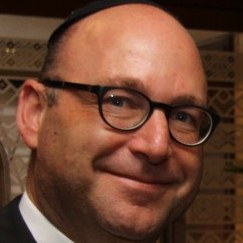
Voices

Egalitarian minyanim – a South African perspective
HOWARD FELDMAN
Pesach adherence meant removing the bread from the cheeseburger and Yom Kippur ended with a Yom Kippur dance that required preparation from mid-afternoon. Hardly a woman covered her hair (or pretty much anything else) and satin kippot had a firm and noticeable pocket crease.
Today things are more than slightly different. Despite tremendous political and economic uncertainty (as well as criminal), the community is thriving. Multiple Jewish day schools, yeshivot, shuls, aged homes, a sophisticated and caring welfare system, a Jewish newspaper, its own Jewish radio station, Beth Din and Hatzolah all thrive.
A spirit of inclusiveness is what defines the community. And although everyone still complains about the cost of kosher chickens, there is a sense of pride of what has been established at the tip of Africa. What began with a group of bedraggled and tired survivors, has culminated in a strong and dynamic force that is in many ways an example to the world.
There are many reasons why Johannesburg has seen such a strong return to Jewish observance. One of them was the approach of the rabbinate who had to make “compromises” that they might well have not been comfortable with.
The fact that many Jews drove to shul on a Friday night (filling the parking lot), could not have been easy for them. And yet, no one stood on the pulpit demanding that they cease to do so.
The rabbis knew full well that if their members didn’t drive to shul, then they would drive elsewhere and that the link to Judaism would be severed. They were encouraged to attend and were not made to feel “less than” for having done so.
Rather, many shuls introduced a “Kiddush” after shul on a Friday night, rosters for Shabbat day attendance, classes in prayer and they made sure not to berate members who might not adhere to the strict letter of halachic law.
The Shabbos Project is a South African export. And it could only be. Brainchild of South Africa’s Chief Rabbi Warren Goldstein, the concept is one of inclusiveness.
It is designed for non-Shabbat observant Jews to “keep it together” with those who already adhere to the laws of the day. People are encouraged to invite neighbours and streets are blocked for Shabbat dinners.
An alternate approach of course could have been to close off roads and to throw stones at cars driving through the area while screaming “Shabbos!” but it takes no expert in human behaviour to know which will yield more results.
Which makes the Kotel debacle so frustrating to watch. The fact that a compromise for an egalitarian prayer area was “frozen” because of ultra-Orthodox pressure, will no doubt result in more damage than it will do good.
It will keep members of the Conservative and Reform communities away from the holiest places open to Jews and in doing so, send a message that they have no place in community. It tells a large number of Jews that rather than “not driving to shul” on a Friday night, they should find something else to do.
What makes it more puzzling is that even if the goal of those objecting to the egalitarian minyanim is to ultimately make the attendees more “Orthodox”, then surely, having them at the Kotel where they might engage and educate, would be way more fruitful. Surely it’s obvious that there is more to be achieved by inviting someone to Shabbat dinner than by throwing stones at them.
The Johannesburg Jewish community is imperfect. There are multiple challenges that exist. And that would exist within any community that strives for cohesiveness. But what counts above all, is that at its heart beats the desire to bring fellow Jews closer to each other. And not further apart.





DS
July 11, 2017 at 7:58 am
‘I have never heard such rubbish!
Even Chief Rabbi Louis Rabinowitz made quite clear (see To Reach for the Moon: The Ministry of Chief Rabbi Louis Rabinowitz) that he did not condone driving to shul and whilst some used the carpark many people at Oxford, the Great Synagogue and the like especially parked around the corner because they knew it was wrong to desecrate the Sabbath. Rabbi Norman Bernhard made quite clear in his well known radio debate that the difference between his community and the Reform in JHB which both drove to worship was that ‘his community knows it is wrong’.
Has Feldman ever walked past the desolate Reform prayer section? No one is there ever apart from the occasional Bar-Mitzvah. And for good reason: Reform has for years expunged any reference to the Temple and Israel from their Siddurim because they are Germans/Americans/Britons of the \”Mosaic faith\” with allegiance to their country alone. They misguidedly deplore the ‘sacrificial cult’ which we refer to as Korbanot- of what importance to them is the very location where sacrifices were made: the kotel?. Rather try kiruv at home. You aint going to find it at that little Plaza bereft of Jews. If anything the fact that the ‘progressives’ have had to pray at the regular wall allows them to be picked up by Aish, Chabad and Our Somayach. The only person they will be picked up by at the Reform section is Anat Hoffman, or someone from the Hebrew Union College of reform who will do what exactly? Encourage them to lead a life of Shomrei Torah UMitzvot? Or encourage them to join a movement which according to the Pew Report will suffer extinction if Holocaust-scale trends continue??? Howard normally you write sensible things. I am surprised Heidi let you write such nonsensical, ironically flawed and historically-inaccurate diatribes. ‘